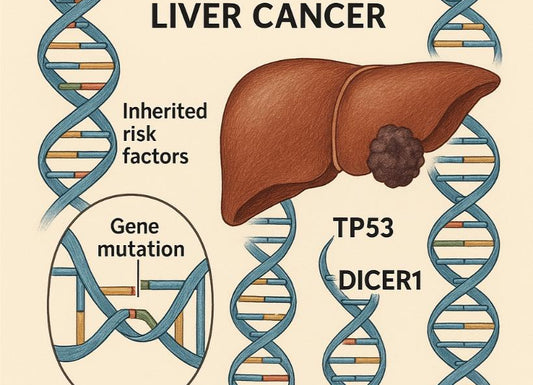When Is the Best Time to Take Insulin for Type 2 Diabetes?
 Written By
Yusela Aquino
Written By
Yusela Aquino

Timing is everything when it comes to insulin therapy for type 2 diabetes—getting it right can mean the difference between stable blood sugar and dangerous highs or lows. Different types of insulin work in different ways, so it is important to match them with meals, exercise, and even changes like illness or shift work. Understanding how timing affects blood sugar can make daily diabetes management easier and improve overall well-being.
In this article, we will share our knowledge about the best timing for different insulin types, the influence of meals and physical activity, and key adjustments for specific situations. Understanding them can support improved glycemic stability and quality of life.
Understanding Insulin Types and Their Timing Considerations
Insulin comes in different types, each working at its own pace. Knowing when to take it is key to keeping blood sugar steady:
- Long-acting insulin (glargine, detemir, degludec) can last up to 24 hours, while degludec can go over 42 hours! Glargine starts to work after 1.1 hours, while detemir's onset is 1-2 hours after injection. Degludec also starts to act around 1 hour after injection.
- Intermediate-acting insulin (NPH) lasts 14-18 hours and usually peaks 4–8 hours after injection.
- Short-acting insulin (regular insulin) takes effect 1 hour after injection, peaks at 4-8 hours, and lasts for 4 hours.
- Rapid-acting insulin (lispro, aspart, glulisine) starts working within 10–15 minutes, peaks at about 60-90 minutes, and lasts for 4-5 hours.
The right insulin type and timing depend on your daily routine, meals, and blood sugar patterns. A good schedule can make managing diabetes much easier!
Determining the Best Time to Administer Insulin
Insulin timing must be tailored to specific insulin types and personal daily routines. General recommendations include:
- Long-acting insulin: Typically administered once daily at the same time everytime, depending on your schedule and how it affects you.
- Rapid-acting insulin: Best taken 10-15 minutes before meals to manage postprandial glucose excursions.
- Short-acting insulin: Optimal administration occurs 30–40 minutes prior to eating to allow for proper glucose control.
Additional factors, such as meal schedules, physical activity, and individual glucose variability, must be considered when fine-tuning insulin administration.
Optimizing Long-Acting Insulin Timing

Basal insulin keeps your blood sugar steady between meals and overnight. Here's what to keep in mind when timing your doses:
- Morning vs. evening. Some take long-acting insulin in the morning for daytime control, while others take it at night to prevent high fasting levels. It all depends on how your body handles glucose.
- Stay consistent. Taking your insulin at the same time each day helps prevent unexpected blood sugar swings.
- Personalized approach. Some insulins, like detemir (Levemir), may need two doses for full coverage. Your doctor can help you find the right schedule.
A well-timed insulin routine can make a big difference in keeping your blood sugar stable!
Timing Rapid-Acting Insulin for Postprandial Control
Rapid-acting insulin helps manage blood sugar spikes after meals. Here's how to time it effectively:
- Before meals is best. Taking rapid-acting insulin 10–15 minutes before eating helps keep blood sugar in check. Some people may need to adjust timing based on their digestion.
- Delaying can cause spikes. Waiting too long to take insulin after a meal can lead to high blood sugar.
Finding the right timing for your insulin can make a big difference in keeping blood sugar steady. A little adjustment goes a long way!
The Role of Glucose Monitoring in Insulin Timing

Blood glucose tracking is critical for refining insulin administration strategies. Effective monitoring approaches include:
- Pre- and post-meal testing identify glucose trends and informs insulin adjustments.
- Continuous glucose monitoring (CGM) provides real-time data on insulin effectiveness.
- Bedtime and exercise assessments help detect nocturnal or activity-induced fluctuations.
For those managing diabetes at home, convenient at-home urine test kits can be a helpful tool for additional insights into metabolic health. Ribbon Checkup's at-home urine test kits offer an easy way to check for key markers, including glucose and ketones, which can help you monitor changes in your body's response to insulin. With quick results, you can make timely adjustments to your diabetes management plan—without needing frequent lab visits!
Common Errors in Insulin Timing and How to Avoid Them
Mistimed insulin administration can significantly impact blood sugar control. Frequent mistakes include:
- Injecting insulin too early or too late relative to meals.
- Skipping doses due to uncertainty about timing.
- Neglecting adjustments for lifestyle changes, including travel and stress.
Medication and Supplement Interactions Affecting Insulin Timing
Certain medications and supplements may alter insulin sensitivity and glucose regulation:
- Oral diabetes medications like metformin may cause the need for insulin timing modifications.
- Supplements can influence insulin effectiveness and glucose metabolism. Studies show that berberine and magnesium enhance the sensitivity of cells to insulin.
- Prior medical guidance is essential before modifying insulin schedules.
Sleep Patterns and Their Influence on Insulin Sensitivity
Circadian rhythms and sleep quality impact insulin efficacy. Key considerations include:
- Nocturnal insulin resistance. Poor sleep may contribute to increased insulin requirements.
- Regular sleep schedules. Consistent rest patterns improve insulin function and metabolic health.
Conclusion
Optimizing insulin timing is a crucial component of effective diabetes management. Key takeaways include:
- Insulin timing should align with the specific type of insulin used.
- Meals, exercise, illness, and work schedules influence insulin absorption and action.
- Routine blood glucose monitoring helps refine insulin timing and enhances glycemic control.
Since insulin needs vary among individuals, collaborating with a healthcare provider to establish a personalized regimen is essential for achieving optimal diabetes management.
Related Resources
References
Cafasso, J. (2023, June 27). Insulin before or after meals? and other do's and don'ts. Healthline. https://www.healthline.com/health/type-2-diabetes/insulin-dos-and-donts#when-to-eat
Cunningham, A. M., & Freeman, A. M. (2022, December 28). Glargine insulin. StatPearls - NCBI Bookshelf. https://www.ncbi.nlm.nih.gov/books/NBK557756/
Diabetes and exercise: When to monitor your blood sugar. (n.d.). Mayo Clinic. https://www.mayoclinic.org/diseases-conditions/diabetes/in-depth/diabetes-and-exercise/art-20045697
Donga, E., Van Dijk, M., Van Dijk, J. G., Biermasz, N. R., Lammers, G., Van Kralingen, K. W., Corssmit, E. P. M., & Romijn, J. A. (2010). A single night of partial sleep deprivation induces insulin resistance in multiple metabolic pathways in healthy subjects. The Journal of Clinical Endocrinology & Metabolism, 95(6), 2963–2968. https://doi.org/10.1210/jc.2009-2430
How and when to take rapid-acting insulin. (2025, February 25). NHS UK. https://www.nhs.uk/medicines/insulin/rapid-acting-insulin/how-and-when-to-take-rapid-acting-insulin/
Insulin degludec: Uses, Interactions, Mechanism of Action | DrugBank Online. (n.d.). DrugBank. https://go.drugbank.com/drugs/DB09564
Insulin glargine: Uses, Interactions, Mechanism of Action | DrugBank Online. (n.d.). DrugBank. https://go.drugbank.com/drugs/DB00047
Ivanova, G. (2024, November 29). Prioritize sleep for optimal diabetes management. Diabetes:M - Your Diabetes Management App. https://diabetes-m.com/blog/news/sleep-patterns-and-diabetes/
Liu, H., Li, N., Jin, M., Miao, X., Zhang, X., & Zhong, W. (2020). Magnesium supplementation enhances insulin sensitivity and decreases insulin resistance in diabetic rats. PubMed, 23(8), 990–998. https://doi.org/10.22038/ijbms.2020.40859.9650
Munguia, C., & Correa, R. (2023, July 3). Regular insulin. StatPearls - NCBI Bookshelf. https://www.ncbi.nlm.nih.gov/books/NBK553094/
Nguyen, V. (2021, September 27). Levemir dosage. https://www.medicalnewstoday.com/articles/drugs-levemir-dosage
Reynolds, A., & Mitri, J. (2024, April 28). Dietary Advice For Individuals with Diabetes. Endotext - NCBI Bookshelf. https://www.ncbi.nlm.nih.gov/books/NBK279012/
Saleem, F., & Sharma, A. (2023, June 12). NPH insulin. StatPearls - NCBI Bookshelf. https://www.ncbi.nlm.nih.gov/books/NBK549860/

Yusela is a medical student with a degree in Biology and a strong foundation in health communication. With experience in both research and clinical settings, she writes clear, evidence-informed content to help patients and caregivers better understand liver health, chronic disease, and transplant care.



